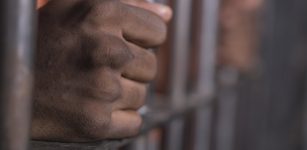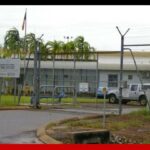New Prison for Indigenous Inmates

One of the more troubling statistics to emerge from our criminal justice system is that Aboriginal and Torres Strait Islander inmates make up 40% of Western Australia’s prison population, despite comprising only 3% of the state’s population.
Many Australian prisons hold painful memories for indigenous communities – but a new prison in WA is reportedly focused on self-sustainability and the rehabilitation of indigenous inmates.
The West Kimberly Regional Prison was opened in 2012 and is specifically designed to hold Indigenous offenders. It is a state of the art facility that cost $150 million to build. The project was based on the philosophy of Aboriginal values including recognition and acceptance of cultural, kinship, family and community responsibilities. Unlike most European-style prisons, it also recognises the importance of maintaining a spiritual connection to the land.
The prison houses 120 male and 30 female inmates in 22 self-care units. Each unit holds 6 or 7 inmates who and are grouped according to family ties and language, as well as security rating.
The Derby Boab Prison Tree
A few kilometres away from the new complex is an old prison facility that carries painful memories for many Indigenous communities in the Western Kimberly region.
The old facility is home to the Boab Prison Tree, which was used to restrain inmates.
Boab trees grow to have extremely large, bottle-shaped trunks. The Boab Prison Tree was also hollow in the middle. To ‘build’ the old prison, horseshoes were hammered into the tree as hooks and the prisoners were chained to the horseshoes overnight.
During the 1890s up to 23 prisoners were attached to the tree at a time before they were taken to the main Derby prison in town. Hundreds of Indigenous inmates were treated in this way.
The nearby Derby prison was essentially a giant cage with a roof. Up to 60 men were held there at any one time. Their crimes included hunting livestock and other trivial offences.
The prison was also used to house members of the ‘Stolen generation’ before they were shipped off to other areas in WA.
The new prison
Superintendent Mike Macfarlane, who is a Nyoongar Aboriginal, is in charge of all prisons across the Kimberly.
Mr Macfarlane hopes that the prison will help make inmates into better people, telling the ABC’s Law Report:
“My idea is to make a better person, not a better prisoner, if you like, in that respect. So given that we are a small community in Derby, the person that I look after today might be my neighbour tomorrow.”
Inmates essentially take care of themselves, having responsibility for the upkeep of their own cells and units. They cook their own meals, as well as those of the prison staff. They also have opportunities for education.
Money well spent?
Some have suggested that the prison’s $150 million could have been better spent elsewhere, such as into diversionary programs to stop people entering prisons in the first place.
But others believe that it is money well spent, and that we owe it to our Indigenous communities to invest in facilities that promote their rehabilitation and help break the cycle of crime.
There are currently no similar facilities in New South Wales, or anywhere else in Australia, despite the fact that a whopping 23% of the NSW prison population is indigenous.






